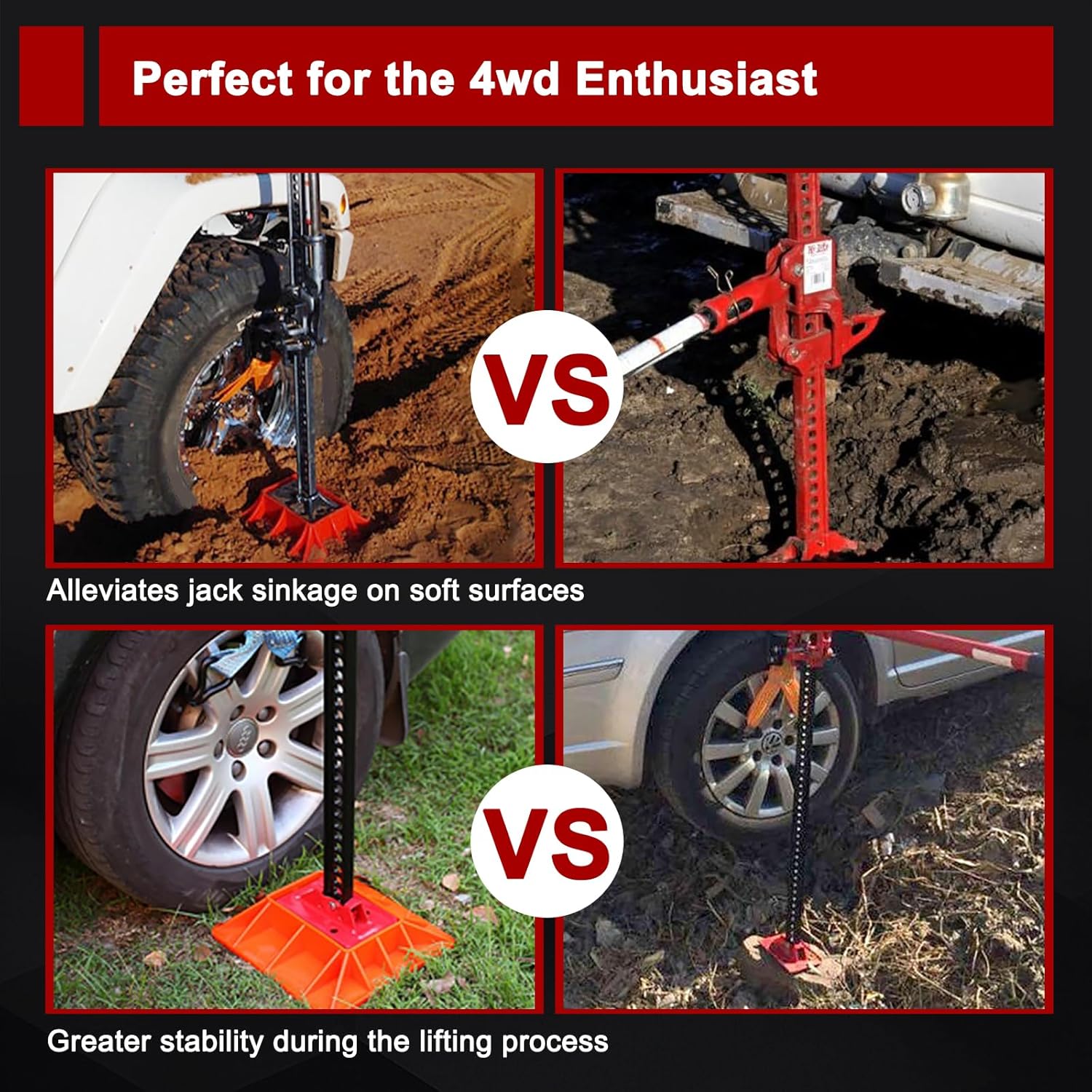Stuck Happens: Off-Road Recovery—Winch, Straps & Boards
Stuck Happens: A Guide to Safe and Effective Off-Road Recovery
Everybody gets stuck. The pros just make it look boring—because safe recovery is calm, methodical, and frankly a little un-dramatic. This guide turns panic into process: who’s in charge, how far back people stand, how to choose between a strap, kinetic rope, boards, winch, or a hi-lift, and exactly what to do next.
Recovery safety is paramount
- Stop → Assess → Plan → Brief → Execute. If voices are loud, hit pause.
- One incident commander: designate a single person to call the shots.
- Exclusion zone: Everyone 1.5× the strap/line length away and off to the sides.
- Rated points only: Never attach to tow balls, tie-downs, or cosmetic bumpers.
- PPE: Gloves, eye protection, closed shoes. No one straddles a line, ever.
- Park safe. Chock wheels as needed. Set parking brakes.
- Clear comms: hand signals or radios. Countdowns before pulls.
- Dampers/blankets on lines. Rated soft/bow shackles only.
- Healthy anchors: tree with a tree-saver, or a vehicle’s rated points.
Understanding your gear
Use the gentlest tool that solves the problem. Dig + boards fixes more stucks than any winch ever will.
- Best first move in sand/snow/mud at low risk.
- Two boards let you build ramps in pairs.
- Rinse grit; UV-safe plastic lasts longer.
- Tow strap: low stretch, for gentle, steady pulls.
- Kinetic rope: 15–30% stretch for “snatch” recoveries in soft terrain—requires space, training, and clear zones.
- No metal hooks; use rated soft or bow shackles.
- Tree saver, shackles, snatch block, line damper, gloves.
- Synthetic rope is lighter/safer; protect from abrasion and heat.
- Practice free-spool and tidy re-spooling at home.
- Powerful, versatile, and unforgiving. Treat with respect.
- Use a big base on soft ground; keep body/face away from the mechanism.
- Service it; practice lowering under control before trail use.
Self-recovery techniques
- De-risk the scene: People clear, hazards off, vehicle in 4L if available.
- Air down more: Drop 2–6 psi below your trail pressure (watch the beads).
- Shovel first: Dig ahead of all four tires and clear the diff pumpkins.
- Boards: Jam boards snug under leading edges; select 1st-low and crawl onto them.
- Rock it: Short forward/back motions if needed—no big throttle stabs.
Vehicle-to-vehicle recovery (straps & ropes)
- Both vehicles as straight as possible; comms check.
- Attach to rated recovery points with rated shackles.
- Use a tow strap for steady pulls; kinetic rope for gentle snatch on soft ground.
- Place a damper mid-line; clear the exclusion zone.
- Recovering vehicle takes up slack; countdown: “3-2-1—pull.”
- Apply smooth throttle; stuck vehicle adds minimal drive.
- Stop and reassess after a few feet; reset boards/line as needed.
Winching 101 (safe single-line pull)
- Anchor: Tree with a tree-saver, another vehicle (chocked), or ground anchor.
- Rigging: Tree-saver → shackle → winch thimble. No sharp wraps around bark.
- Line: Wear gloves. Free-spool to anchor; keep 5–10 wraps on the drum.
- Damper: Add a line damper mid-span; everyone well back and off to the sides.
- Comms: Operator leads with countdowns. Driver in low-range, wheels straight.
- Pull: Short, controlled spools. Pause to re-set boards and re-tension. Avoid side-pulls; use a snatch block to correct angles and halve load.
- Re-spool: After extraction, winch in under light load, guiding rope in neat layers.
Hi-Lift jack: powerful but dangerous
- When: Lift a corner to fill holes/rocks under a tire, or use as a manual winch with chains/strap.
- Pad it: Use a base plate; never put any body part under a jacked vehicle.
- Lowering: Controlled, one click at a time; keep clear of the handle’s swing arc.
- Accessories: Wheel hook, base, chains/strap, gloves—and a plan.
Recommended recovery kit
Buttons include proper rel="nofollow sponsored noopener noreferrer". Swap titles/URLs/images as needed.

12k Synthetic Rope Winch
Sealed solenoid, aluminum hawse, wireless remote.
✅ Check Price
Kinetic Recovery Rope
15–30% stretch for gentle snatch recoveries.
✅ Check Price
Rated Tow Strap
Low-stretch strap for steady pulls. No metal hooks—ever.
✅ Check Price
Soft Shackles (Rated)
Light, strong, and safer than steel for most rigging.
✅ Check Price
Tree Saver
Protects bark and spreads load at your anchor.
✅ Check Price
Winch Line Damper
Add weight to the line to reduce snap-back risk.
✅ Check Price
Traction Boards (Pair)
Quickest, lowest-risk recovery on soft ground.
✅ Check Price
Hi-Lift Jack + Base
For lifting, clamping, and manual winching—experienced users only.
✅ Check PriceDisclosure: Some links/images above go to Amazon. As an Amazon Associate we may earn from qualifying purchases—this never affects our editorial verdict.
Step-by-step playbooks
Gentle strap pull (tow strap)
- Attach strap to rated points on both vehicles; add damper mid-line.
- Recovering vehicle takes up slack; countdown on radio: “3-2-1—pull.”
- Apply smooth throttle; stuck vehicle adds light drive. Stop and reassess every few meters.
Kinetic rope “snatch” (soft terrain)
- Leave more distance; widen the clear zone; shackles rated; damper on the rope.
- Recovering vehicle rolls at walking speed to load the rope—not a ram. One, maybe two attempts.
- If no joy, stop. Dig, board, winch, or change plan.
Basic single-line winch pull
- Tree saver around anchor → shackle → winch thimble; damper on line.
- Driver in 4L, neutral/park brake set as needed; wheels straight.
- Operator spools in with short pulls; watch anchor, rigging, and rope lay.
Hi-Lift lift-and-pack (to free a hung diff)
- Base plate down, jack on rock slider/point; lift slowly until tire clears.
- Pack rocks/boards under tire; lower carefully; drive off gingerly.
Next up: Becoming a Trail Master — Advanced Skills & Continued Learning.




Comments